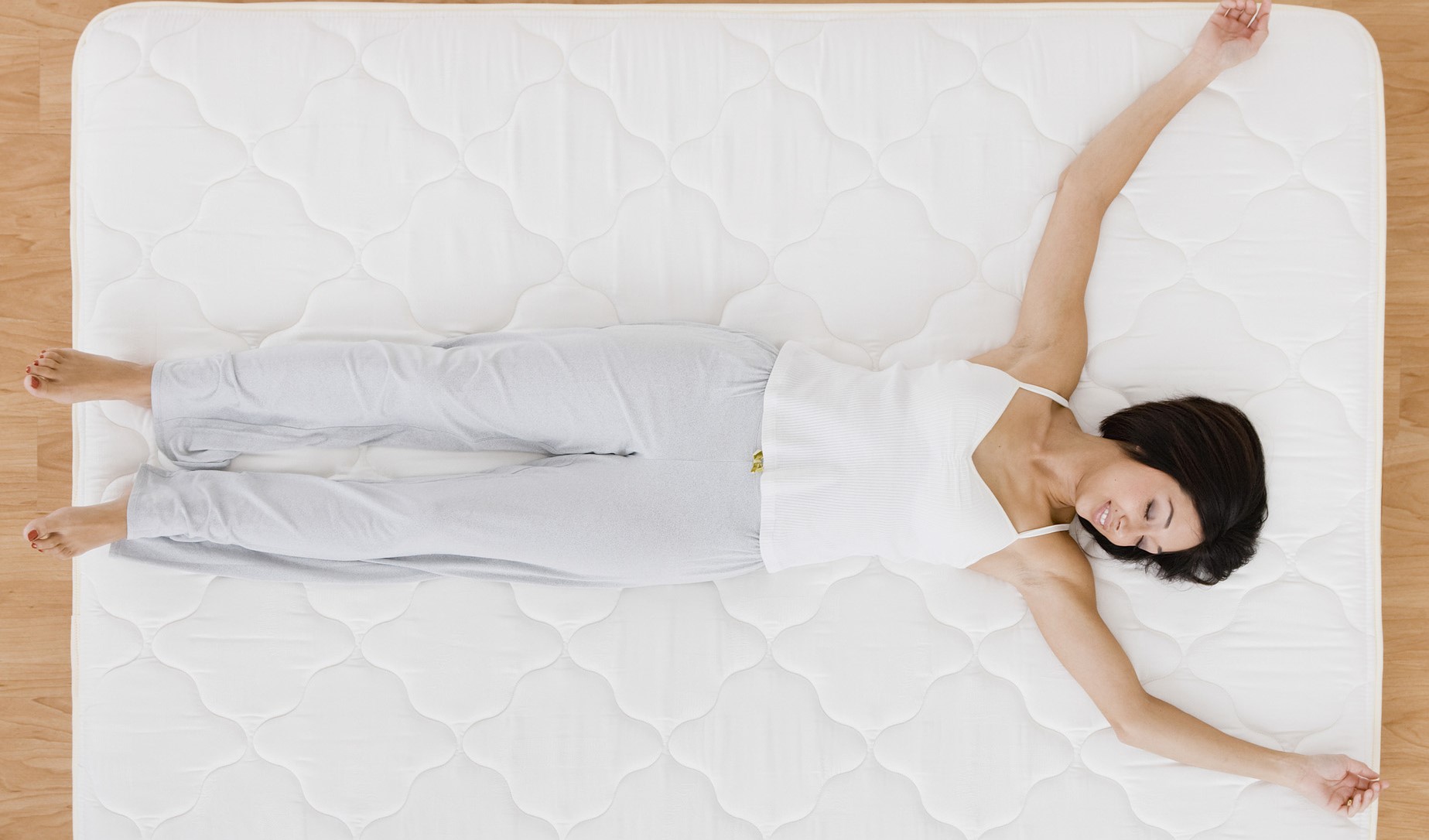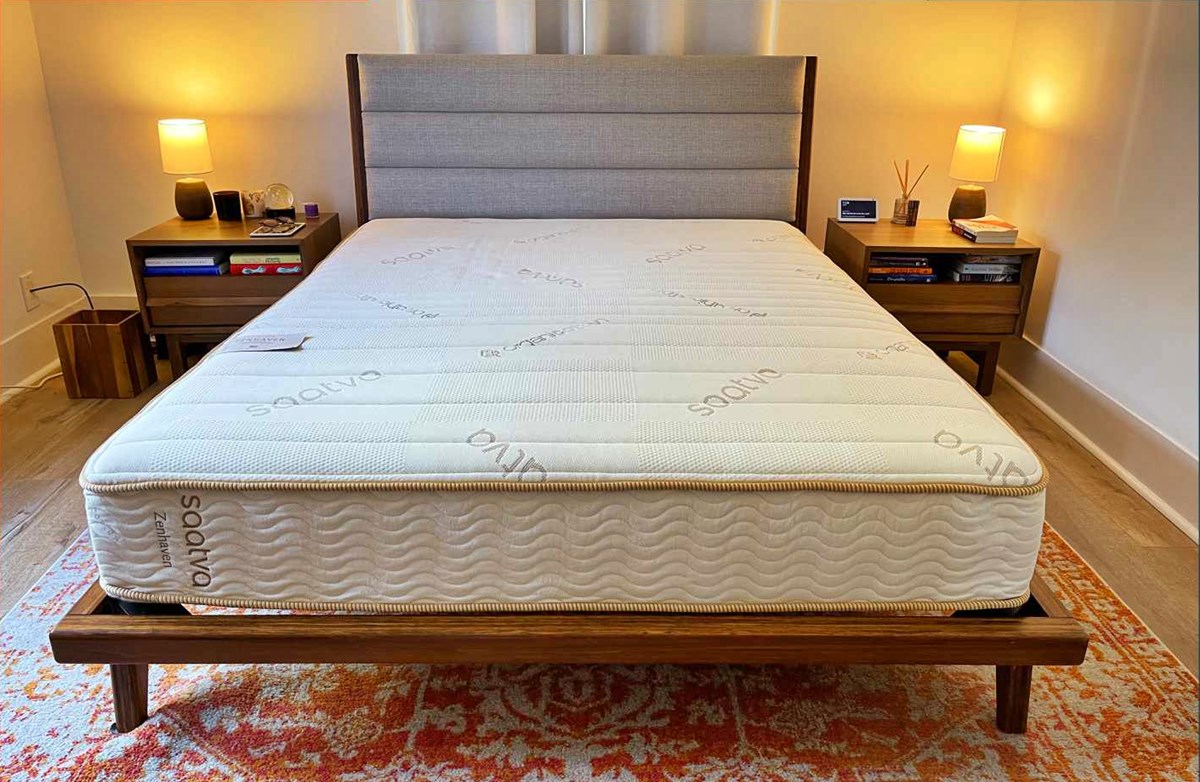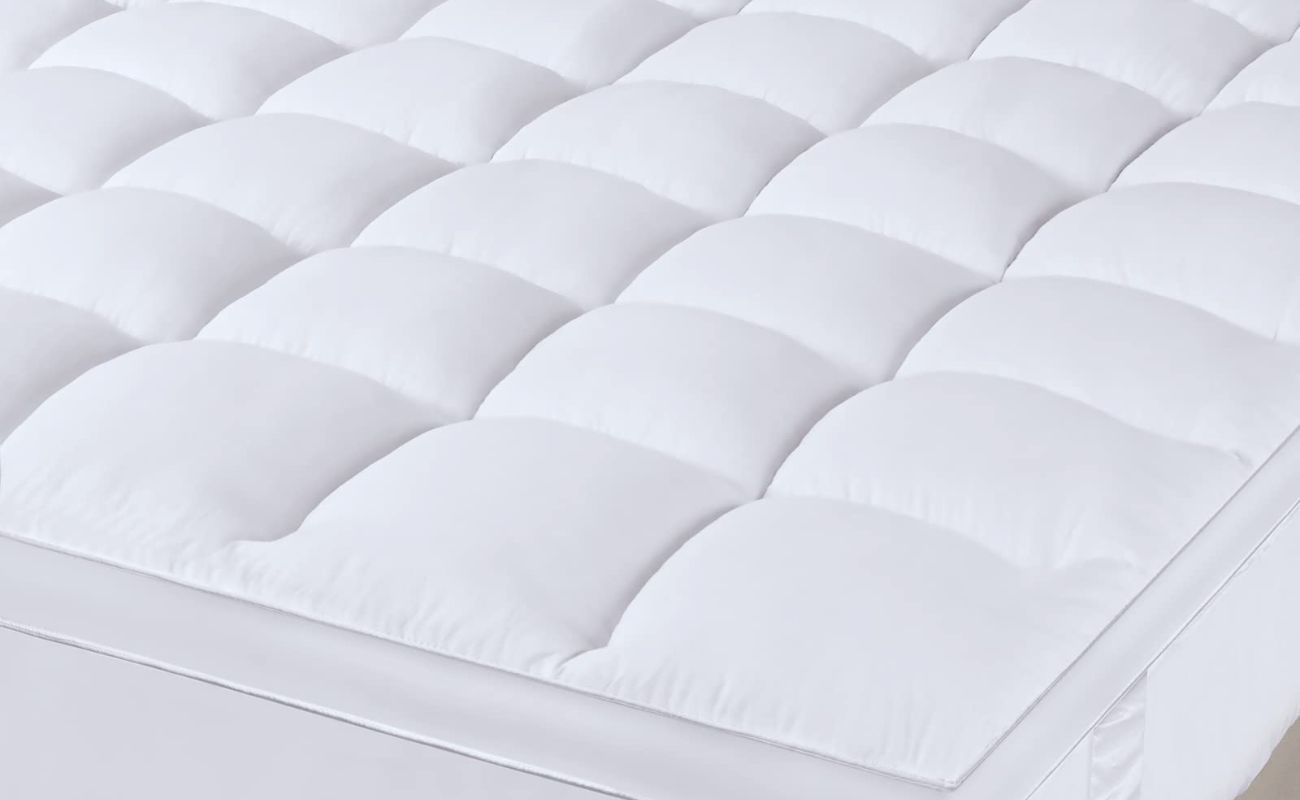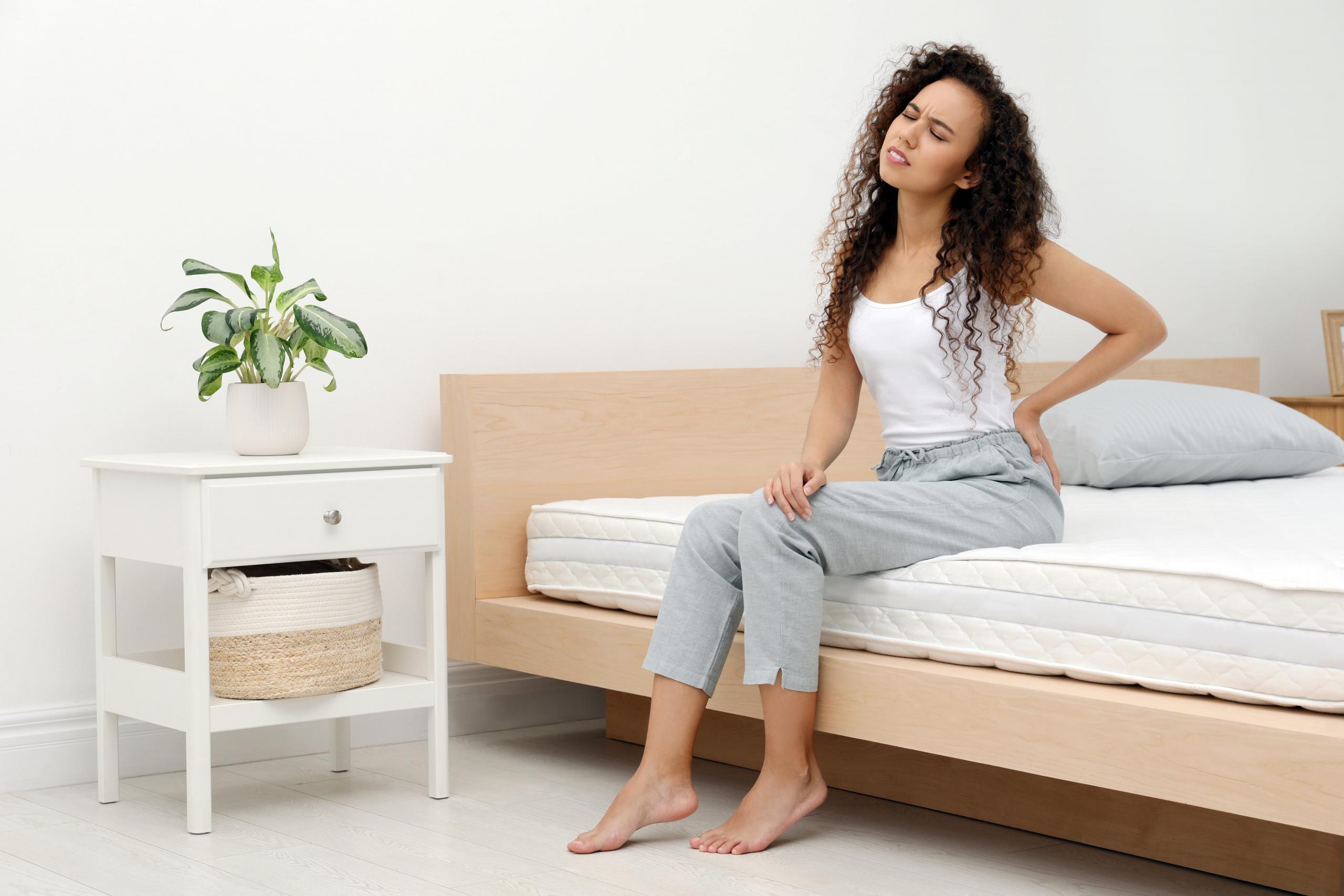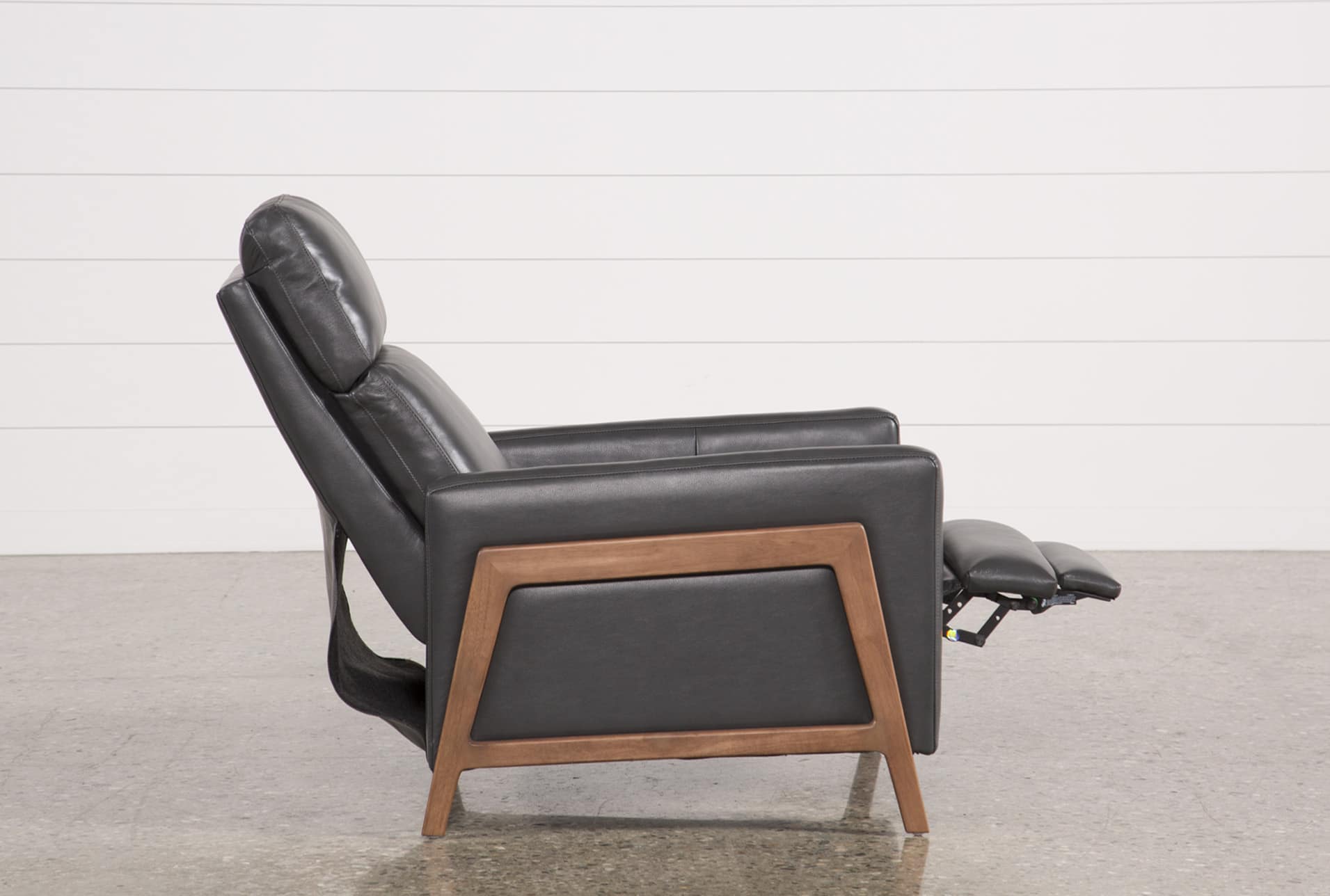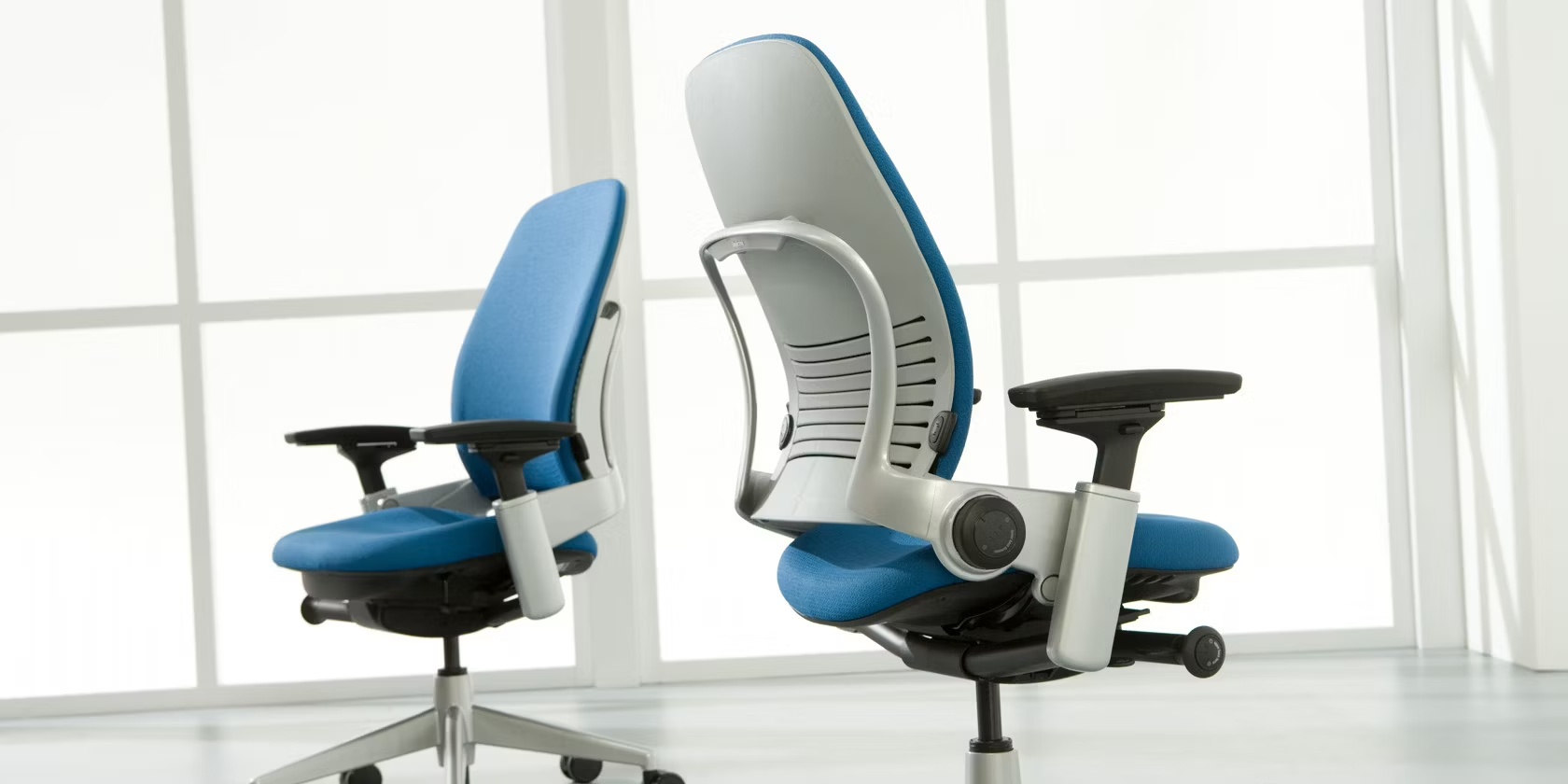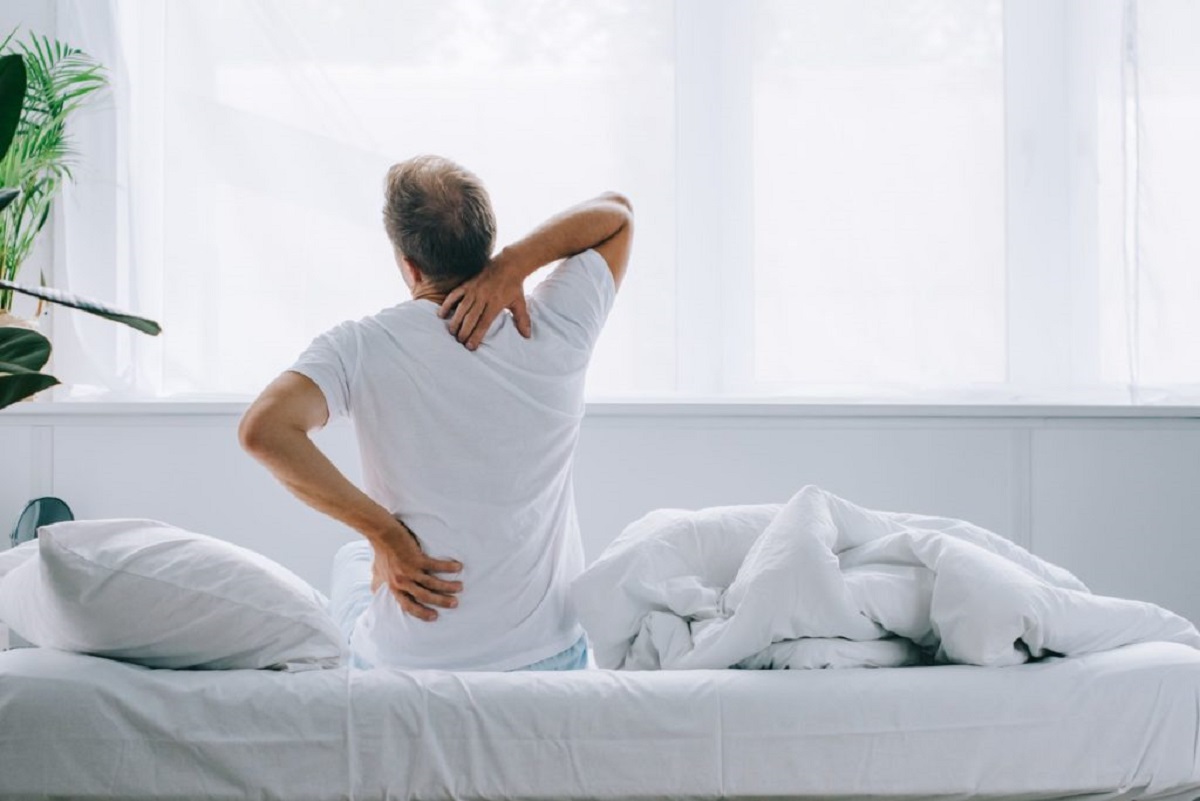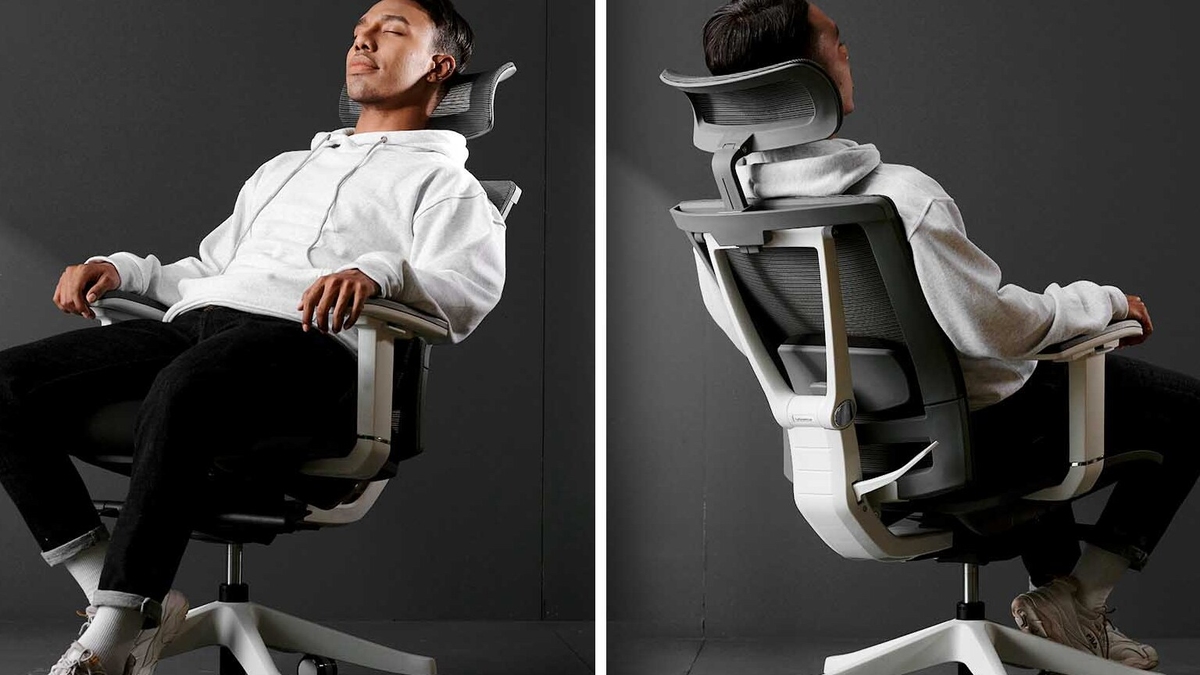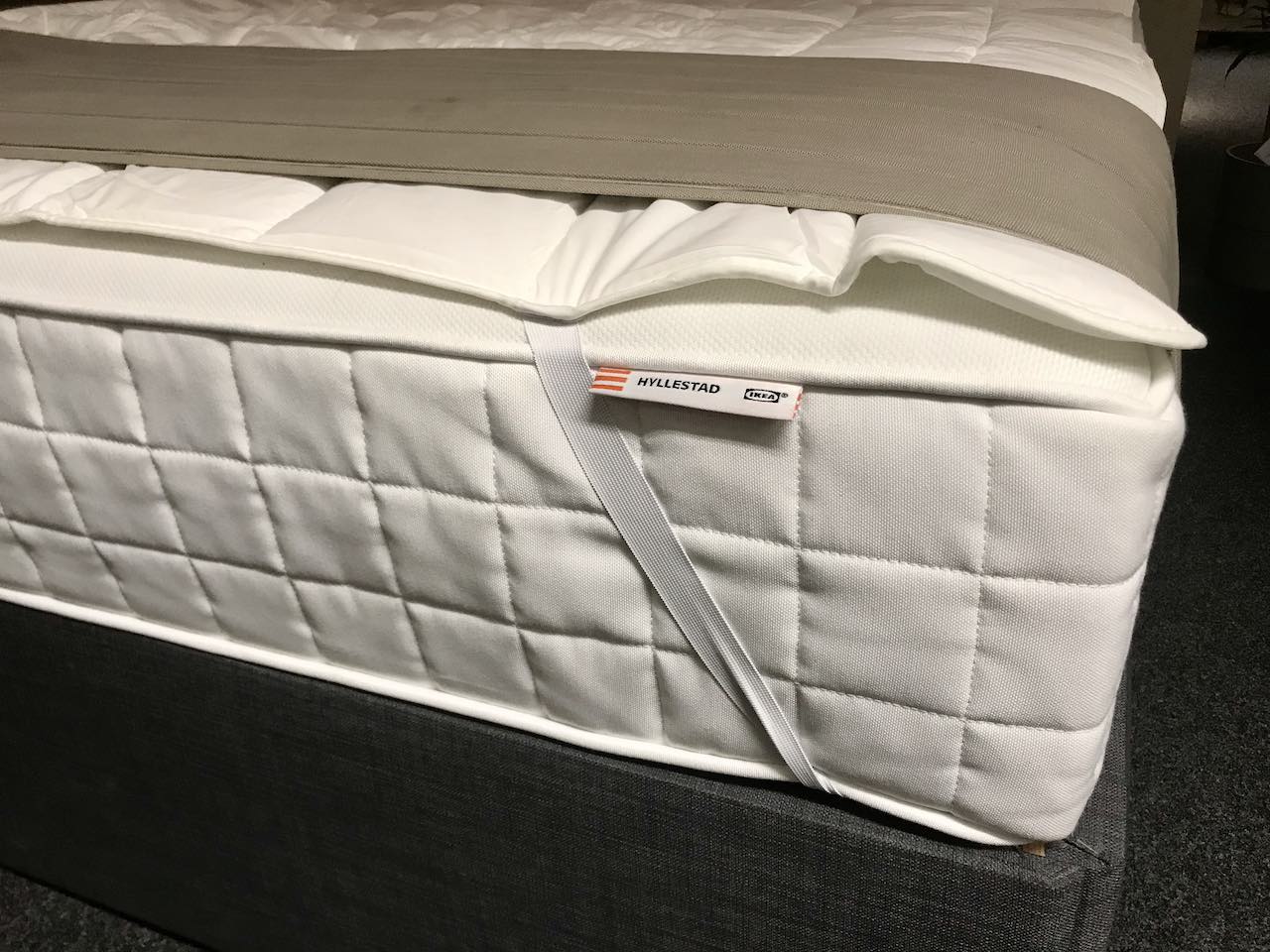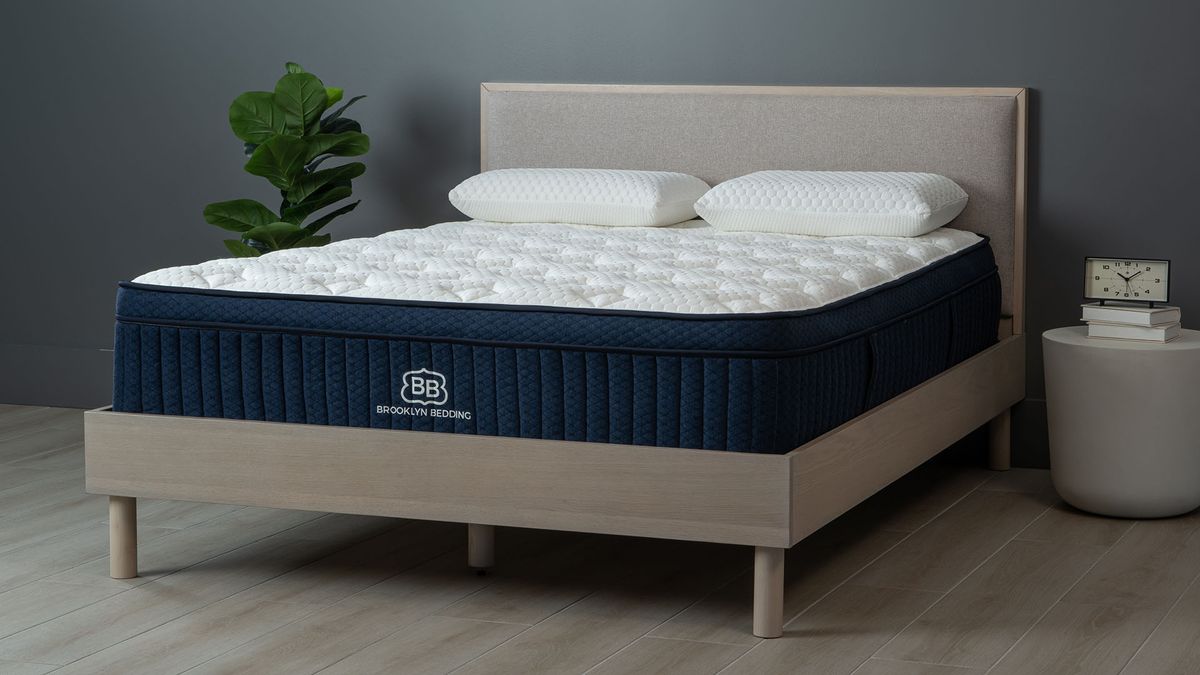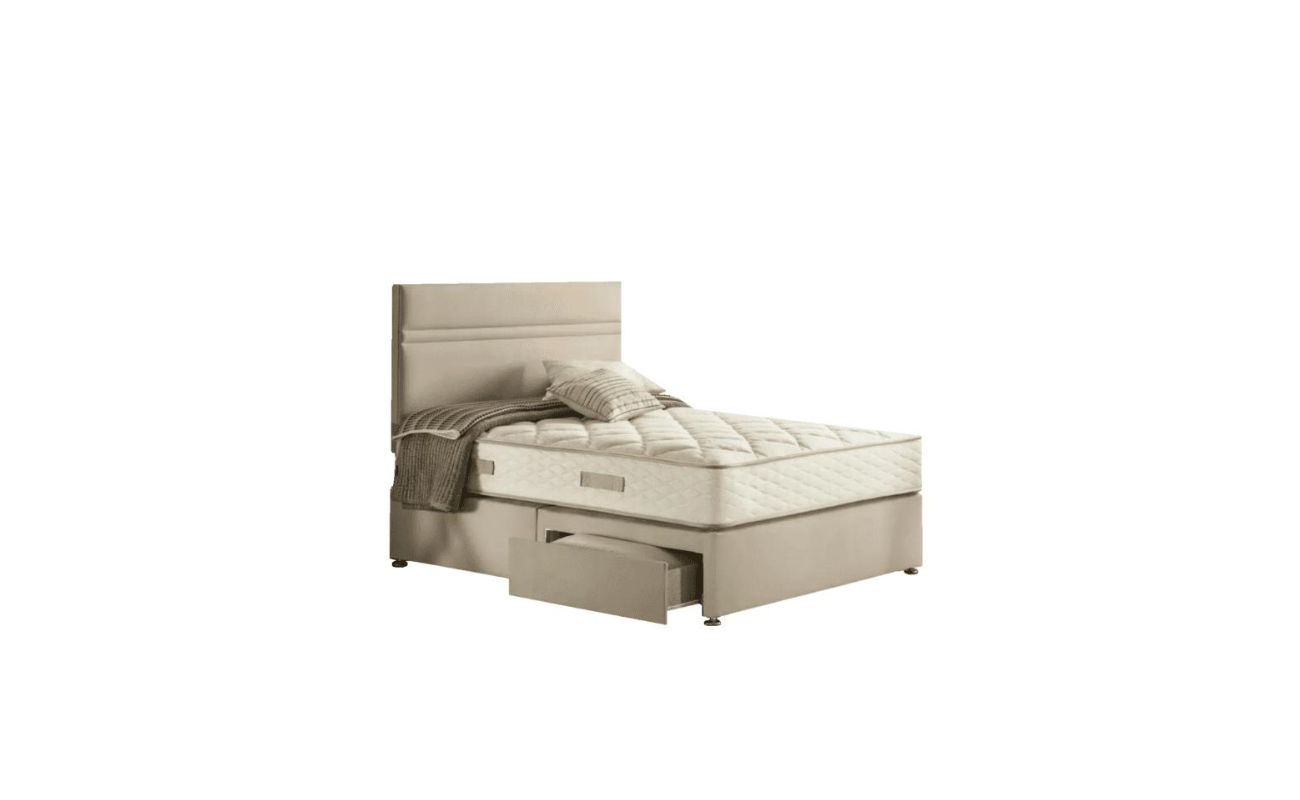Home>Furniture>Bedroom Furniture>What Is The Best Mattress For Hip Pain
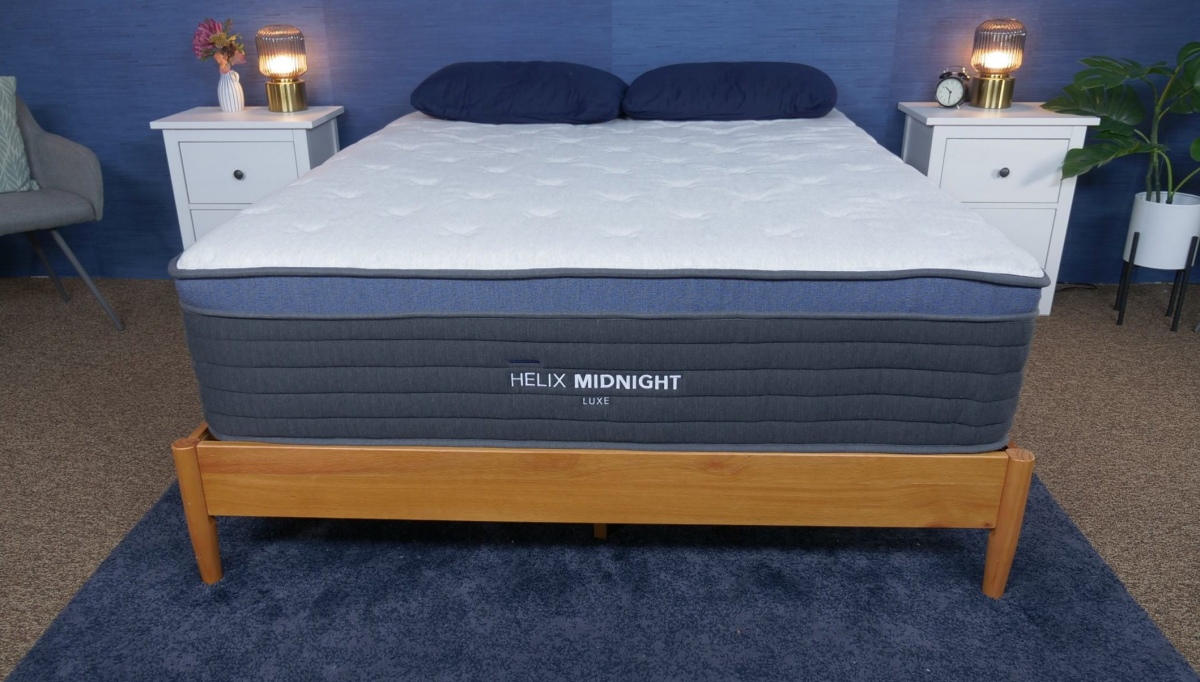

Bedroom Furniture
What Is The Best Mattress For Hip Pain
Modified: September 2, 2024
Find the ideal bedroom furniture for hip pain relief with our comprehensive guide to the best mattresses. Improve your sleep and comfort today!
(Many of the links in this article redirect to a specific reviewed product. Your purchase of these products through affiliate links helps to generate commission for Storables.com, at no extra cost. Learn more)
Introduction
Getting a good night’s sleep is essential for our overall well-being and functionality. However, if you suffer from hip pain, it can significantly impact the quality of your sleep and daily life. The right mattress can make all the difference when it comes to finding relief and improving your sleep comfort.
Understanding the causes of hip pain and how it affects your sleep is crucial in selecting the best mattress for hip pain. With numerous options available in the market, it can be overwhelming to choose the right one. This article aims to guide you through the process of selecting the best mattress to alleviate hip pain and help you sleep soundly.
Let’s delve into the factors to consider and explore the different types of mattresses that can provide relief for hip pain. We’ll also discuss some handy tips for sleeping with hip pain to enhance your sleep experience.
Key Takeaways:
- Choosing the right mattress, such as memory foam, innerspring, latex, hybrid, or airbed, can significantly alleviate hip pain by providing support, pressure relief, and motion isolation for improved sleep comfort.
- Implementing strategies like pillow support, adjusting sleeping positions, and using heat or cold therapy, along with consulting healthcare professionals, can further enhance sleep quality and reduce hip pain.
Understanding Hip Pain
Hip pain is a common problem that can affect people of all ages. It can range from mild discomfort to sharp, debilitating pain. Hip pain can be caused by various factors, including injury, overuse, arthritis, bursitis, and muscle imbalances.
To understand hip pain, it’s important to have a basic knowledge of the anatomy of the hip. The hip joint is a ball-and-socket joint, where the head of the femur (thigh bone) fits into the acetabulum (socket) of the pelvis. The joint is surrounded by muscles, tendons, ligaments, and cartilage, all working together to support and facilitate movement.
When the hip joint experiences inflammation, damage, or dysfunction, it can result in hip pain. This pain can be felt in various areas around the hip, groin, buttocks, and even radiate down the thigh or knee. Hip pain can be aggravated by certain movements, such as walking, standing, or sitting for extended periods.
One of the most common causes of hip pain is osteoarthritis, a degenerative joint disease that affects the cartilage in the hip joint. Other conditions that can cause hip pain include bursitis (inflammation of the bursae, fluid-filled sacs that cushion the joint), tendonitis (inflammation of the tendons), and muscle strains or tears.
It’s important to consult with a healthcare professional if you are experiencing persistent hip pain. They can help diagnose the underlying cause and develop an appropriate treatment plan. In some cases, physical therapy, medication, or surgical intervention may be necessary to alleviate the pain and restore hip function.
However, one aspect that can contribute to hip pain relief and improved sleep is choosing the right mattress. A suitable mattress can provide the necessary support and pressure relief to alleviate hip pain and promote a restful night’s sleep.
Causes of Hip Pain
Hip pain can be caused by a variety of factors, ranging from injuries to underlying medical conditions. Understanding the potential causes of hip pain can help identify the best mattress to alleviate discomfort and promote restful sleep.
1. Osteoarthritis: The most common cause of hip pain is osteoarthritis, a degenerative joint disease that occurs when the protective cartilage between the bones wears down over time. This can lead to pain and stiffness in the hip joint.
2. Bursitis: Bursitis is the inflammation of the bursae, the small fluid-filled sacs that cushion the joints. When the bursae in the hip become inflamed, it can cause pain and discomfort.
3. Tendonitis: Tendonitis is the inflammation of the tendons, which are the thick cord-like structures that connect muscles to bones. In the hip, tendonitis can cause pain in the front, back, or sides of the hip.
4. Hip Fractures: Fractures or breaks in the hip can cause severe hip pain, especially in older adults. These fractures typically occur due to falls or accidents, and immediate medical attention is necessary.
5. Muscle Strains: Strained or pulled muscles around the hip can cause pain and discomfort. This can happen due to overuse, poor posture, or sudden movements.
6. Hernia: A hernia can cause hip pain if there is a bulge or protrusion in the abdominal or groin area that puts pressure on the nerves surrounding the hip joint.
7. Hip Labral Tear: The labrum is a ring of cartilage that lines the outer rim of the hip joint. When it tears, it can cause hip pain, especially during physical activities or movements that involve rotation of the hip.
8. Inflammatory Conditions: Conditions like rheumatoid arthritis and ankylosing spondylitis can cause inflammation in the hip joint and lead to chronic hip pain.
9. Injuries: Hip pain can also be caused by traumatic injuries such as dislocations, sprains, or strains. Accidents, sports-related injuries, and direct impacts to the hip can result in significant pain and discomfort.
It is crucial to consult with a healthcare professional to determine the specific cause of hip pain. They can provide a proper diagnosis and suggest appropriate treatments or lifestyle adjustments to manage the pain. Furthermore, choosing the right mattress can contribute to relieving hip pain and improving sleep quality.
Importance of a Good Mattress for Hip Pain
When you have hip pain, finding a comfortable sleeping position can be a challenge. A good mattress plays a vital role in providing the necessary support and pressure relief to alleviate hip pain and improve sleep quality. Here’s why a good mattress is important:
1. Proper Alignment: A mattress that promotes proper spinal alignment is crucial for individuals with hip pain. It helps maintain a neutral position and reduces pressure on the hip joints, allowing for better comfort and pain relief.
2. Pressure Relief: A high-quality mattress with appropriate cushioning can distribute body weight evenly, reducing pressure on the hips and other sensitive areas. This helps alleviate pain and discomfort associated with hip conditions.
3. Support: Adequate support is essential to keep the body properly aligned and prevent excessive sinking into the mattress. A mattress that offers proper support to the hips and pelvis can help reduce strain on the hip joints and muscles, promoting pain relief.
4. Motion Isolation: If you sleep with a partner, motion isolation is crucial to minimize disturbances during the night. A mattress that absorbs movement can prevent sudden jolts or shifts that might exacerbate hip pain.
5. Durability: A good mattress should maintain its supportive and comfortable qualities over time. Investing in a durable mattress ensures long-term pain relief and better sleep quality for individuals with hip pain.
6. Temperature Regulation: Some mattresses are designed with cooling materials or airflow systems that help regulate body temperature. This can be beneficial for individuals who experience increased hip pain due to excessive heat or discomfort.
7. Personalized Comfort: Every individual has unique preferences and sleep styles. A good mattress allows for customization and provides options for different firmness levels or adjustable features to cater to individual needs and alleviate hip pain.
It’s important to note that no single mattress is perfect for everyone with hip pain. The right mattress choice will depend on factors such as your specific condition, body type, personal preferences, and sleeping habits. Consulting with a healthcare professional or mattress expert can guide you in choosing the best mattress for your specific needs.
In the following sections, we will explore different types of mattresses that are known to provide effective relief for hip pain. Remember, finding the right mattress is a highly subjective process, so it’s essential to consider your individual needs and preferences when making a selection.
Factors to Consider When Choosing a Mattress for Hip Pain
When it comes to selecting a mattress for hip pain relief, there are several essential factors to consider. Taking these factors into account will help ensure that you choose a mattress that provides optimal support, pressure relief, and comfort. Here are the key factors to keep in mind:
1. Firmness Level: The firmness level of a mattress is crucial in providing support and alleviating hip pain. While personal preference plays a role, medium-firm to firm mattresses are generally recommended for individuals with hip pain. This firmness level can offer adequate support to keep the hips properly aligned without causing discomfort.
2. Supportive Materials: Look for mattresses made with supportive materials that can contour to the body’s curves and provide targeted support for the hips. Memory foam and latex mattresses are popular choices for individuals with hip pain as they offer excellent pressure relief and contouring properties.
3. Pressure Relief: Opt for a mattress that provides substantial pressure relief, especially in the hip area. The mattress should allow the hips to sink in slightly while still maintaining proper alignment with the rest of the body. This helps to reduce pressure points and alleviate pain and discomfort.
4. Motion Isolation: If you share the bed with a partner, motion isolation becomes important to prevent disturbances caused by movements during the night. Look for mattresses that have good motion isolation properties, such as memory foam or hybrid mattresses with individually wrapped coils.
5. Durability: Consider the durability and long-term performance of the mattress. A high-quality mattress should maintain its supportive and comfortable qualities for a reasonable lifespan. Look for mattresses with good warranties and customer reviews that attest to their durability.
6. Cooling Features: Heat can exacerbate hip pain for some individuals. Look for mattresses with cooling features like gel-infused foam or breathable materials that help regulate body temperature and promote a cooler sleep environment.
7. Trial Period and Return Policy: When purchasing a mattress online or from a store, consider the trial period and return policy offered by the manufacturer or retailer. This ensures that you have the opportunity to test the mattress and return or exchange it if it doesn’t provide the desired comfort and pain relief.
8. Personal Preferences: Ultimately, comfort is subjective, so consider your personal preferences and individual needs. Some individuals with hip pain may find relief with a specific type of mattress, while others may prefer a different material or firmness level. Test out different options and pay attention to how your body responds to find the best mattress for you.
Remember, it’s always helpful to consult with a healthcare professional or mattress expert who can provide personalized recommendations based on your specific needs and condition.
In the next sections, we will explore different types of mattresses that are known to provide effective relief for hip pain, giving you a better understanding of the options available in the market.
Read more: Hip Pain When Going Up Stairs
Types of Mattresses for Hip Pain Relief
When it comes to relieving hip pain, there are several types of mattresses to consider. Each type offers unique features and benefits that can cater to different sleeping preferences and provide effective pain relief. Let’s explore the most common mattress types:
1. Memory Foam Mattresses: Memory foam mattresses are known for their excellent pressure-relieving properties. They contour to the body shape, including the hips, providing optimal support and reducing pressure points. Memory foam mattresses promote proper spinal alignment, making them a popular choice for individuals with hip pain.
2. Innerspring Mattresses: Innerspring mattresses are constructed with a network of metal coils that offer support and durability. While they may not provide as much contouring as memory foam, they can still offer adequate support for the hips. Look for models with individually wrapped coils, as they provide better motion isolation and can minimize any potential discomfort caused by the springs.
3. Latex Mattresses: Latex mattresses are made from natural or synthetic latex foam. They are known for their responsiveness and ability to contour to the body while providing good support. Latex mattresses are hypoallergenic and resistant to dust mites and mold, making them a suitable choice for individuals with allergies or respiratory issues.
4. Hybrid Mattresses: Hybrid mattresses combine the features of different materials, typically memory foam and innerspring coils. The combination of foam layers and pocketed coils offers the benefits of both cushioning and support. Hybrid mattresses can be an excellent option for individuals with hip pain, as they provide a balance of contouring and responsiveness.
5. Airbed Mattresses: Airbed mattresses feature adjustable air chambers that allow you to customize the firmness level according to your preference. These mattresses provide excellent support and pressure relief, as the air chambers can be adjusted to distribute body weight evenly. Airbed mattresses are ideal for individuals with specific needs or those who prefer a customizable sleeping surface.
When choosing a mattress type, consider factors such as your body weight, sleeping position, and personal preferences. It’s also important to test out different options and consider any additional features, such as cooling properties or edge support, that may enhance your comfort and pain relief.
Remember, always prioritize the quality and durability of the mattress, as a well-constructed and long-lasting mattress is crucial for continued hip pain relief and optimal sleep comfort.
In the next section, we will provide some tips for sleeping with hip pain, which can further complement the use of an appropriate mattress and help enhance your sleep experience.
Memory Foam Mattresses
Memory foam mattresses are renowned for their ability to provide excellent pressure relief and contouring support, making them a popular choice for individuals with hip pain. These mattresses are constructed with layers of memory foam, a viscoelastic material that responds to body heat and weight.
One of the key advantages of memory foam is its ability to conform to the shape of your body, including the hips, by evenly distributing your weight. This contouring effect helps to eliminate pressure points and reduce the strain on your hip joints, providing relief from pain and discomfort.
The memory foam’s response to body heat allows it to soften and mold around your body as you sleep, offering personalized support and a cradling sensation. This can help promote proper spinal alignment, ensuring that your hips are well-supported and aligned with the rest of your body.
Memory foam mattresses also excel in motion isolation, which is beneficial if you share your bed with a partner. The foam absorbs and minimizes motion transfer, meaning that you’re less likely to be disturbed by your partner’s movements during the night. This can contribute to a more restful sleep and a reduction in any potential disruption or additional discomfort caused by motion.
When selecting a memory foam mattress for hip pain relief, consider the density of the foam. Higher-density memory foam tends to offer better support and durability, as it is more resilient and provides enhanced pressure relief. Look for mattresses with a density of at least 4-5 pounds per cubic foot for optimal comfort and longevity.
Additionally, consider the thickness of the comfort layers within the mattress. Thicker comfort layers often provide better cushioning and contouring support. Aim for a mattress with a comfort layer thickness of around 3-4 inches to ensure sufficient pressure relief for your hips.
It’s also important to note that memory foam mattresses can vary in terms of firmness levels. While memory foam offers optimal support for the hips, the overall comfort and firmness preference is subjective. Some individuals may prefer a softer feel, while others may find a firmer mattress more supportive. It’s recommended to choose a mattress with a medium-firm to firm feel, as it provides the necessary support without sacrificing comfort.
Overall, memory foam mattresses are an excellent choice if you suffer from hip pain. Their ability to conform to your body shape, provide pressure relief, promote proper alignment, and minimize motion transfer can significantly enhance your sleep comfort and help alleviate hip discomfort.
Look for a mattress with medium-firm support to help alleviate hip pain. Memory foam or hybrid mattresses with good contouring and pressure relief can also be beneficial.
Innerspring Mattresses
Innerspring mattresses have long been a popular choice for individuals seeking a supportive and responsive sleep surface. These mattresses are constructed with a system of interconnected metal coils or springs that provide support and buoyancy.
One of the significant advantages of innerspring mattresses for hip pain relief is their ability to offer firm support. The coils in these mattresses provide a degree of push-back, which can help keep your hips properly aligned and reduce the strain on your hip joints. The firmness helps distribute your body weight evenly, preventing excessive sinking and allowing for optimal support.
Innerspring mattresses also typically promote good airflow, which can be beneficial for temperature regulation during sleep. The open structure of the coils allows air to circulate, preventing heat retention and helping ensure a cooler sleeping environment.
When selecting an innerspring mattress for hip pain relief, look for models that feature individually wrapped coils, also known as pocketed coils. This design allows each coil to move independently, offering better motion isolation than traditional innerspring mattresses. This can be particularly advantageous if you share the bed, as it reduces the transfer of motion when your partner moves during the night, minimizing potential disruptions for a more restful sleep.
In terms of firmness, choose an innerspring mattress that is medium-firm to firm, as this will provide the best support for your hips while maintaining overall comfort. A mattress that is too soft may cause your hips to sink too much, which can lead to misalignment and increased pain.
It’s important to note that innerspring mattresses typically have less contouring and pressure relief than memory foam or latex mattresses. However, if you prefer a more responsive sleep surface with a slight bounce, an innerspring mattress might be the right choice for you. Some individuals with hip pain find the combination of support and responsiveness in an innerspring mattress to be beneficial for relieving discomfort and promoting a comfortable sleep experience.
Additionally, consider the quality and durability of the mattress. Look for models with a sufficient number of coils and high-quality materials to ensure longevity and continued support. It’s also advisable to choose a mattress that comes with a warranty to protect your investment.
Overall, innerspring mattresses can be a suitable option for individuals with hip pain who prefer a firmer, more responsive sleep surface. Their supportive nature, good airflow, and motion isolation properties make them a reliable choice for improving sleep comfort and alleviating hip discomfort.
Latex Mattresses
Latex mattresses are a popular choice for individuals seeking a comfortable and supportive sleep surface that can provide relief for hip pain. These mattresses are constructed from natural or synthetic latex foam, which offers unique benefits for those experiencing hip discomfort.
One of the key advantages of latex mattresses is their ability to provide excellent support while contouring to the body’s curves, including the hips. Latex foam has a responsive and buoyant nature, allowing it to evenly distribute body weight and alleviate pressure points. This can help reduce strain on the hip joints, promoting proper alignment and relieving hip pain.
Latex mattresses offer a balanced firmness level, typically falling within the medium to medium-firm range. This firmness range provides adequate support for the hips without sacrificing comfort. The slight give of latex foam allows it to conform to the body’s shape while maintaining support, providing a comfortable sleep surface for individuals with hip pain.
In addition to its supportive qualities, latex foam is known for its durability and longevity. Latex mattresses are highly resilient and can maintain their shape and supportiveness for many years. This makes them a wise investment for individuals seeking long-term hip pain relief.
Latex mattresses also excel in temperature regulation. The open-cell structure of latex foam allows for excellent airflow, preventing heat from being trapped in the mattress. This helps regulate body temperature and ensures a cooler sleep environment, which can be beneficial for individuals who experience increased hip pain in hot conditions.
Furthermore, latex mattresses have hypoallergenic and antimicrobial properties, making them an ideal choice for individuals with allergies or sensitivities. Natural latex mattresses, in particular, are resistant to dust mites and mold, promoting a healthier sleep environment.
When choosing a latex mattress for hip pain relief, consider the type of latex used. Both natural and synthetic latex offer similar comfort and support, but natural latex is considered more environmentally friendly. Look for mattresses made from high-quality latex foam, as this will ensure optimal comfort and longevity.
It’s essential to note that latex mattresses can have a higher price point compared to other mattress types. However, the durability and long-term comfort they provide can make them a worthwhile investment for individuals seeking effective relief for hip pain.
To summarize, latex mattresses offer excellent support, pressure relief, and temperature regulation, making them a suitable choice for individuals with hip pain. Their unique properties and durability contribute to a comfortable sleep surface that can alleviate discomfort and promote a restful night’s sleep.
Read more: What Is The Best Mattress For Bad Back Pain
Hybrid Mattresses
Hybrid mattresses combine the best features of different mattress types to provide a balanced and supportive sleep surface for individuals with hip pain. These mattresses typically consist of a combination of memory foam, latex, or polyfoam comfort layers, along with an innerspring coil support core.
The combination of materials in hybrid mattresses offers a blend of contouring support, pressure relief, and responsiveness. The comfort layers, which can include memory foam or latex, provide cushioning and contouring to relieve pressure on the hips and other sensitive areas. These layers adapt to the body’s shape, promoting proper spinal alignment and reducing hip pain.
The innerspring coil support core of hybrid mattresses provides enhanced support, durability, and responsiveness. The coils offer a degree of bounce and a supportive foundation, keeping the spine properly aligned and minimizing excessive sinking into the mattress. This balanced combination of support and contouring makes hybrid mattresses an excellent choice for individuals with hip pain.
Hybrid mattresses also excel in motion isolation, thanks to the individually wrapped coils. The pocketed coil design allows each coil to move independently, reducing motion transfer across the mattress. This feature is especially beneficial for couples, as it minimizes disturbances caused by movement during the night, contributing to a more peaceful sleep.
Another advantage of hybrid mattresses is their breathability and temperature neutrality. The coil support core promotes good airflow, allowing heat to dissipate and preventing excessive heat retention. This can be beneficial for individuals who tend to sleep hot and experience increased hip pain due to overheating.
When choosing a hybrid mattress for hip pain relief, consider the thickness and quality of the comfort layers. Look for a mattress with a significant comfort layer thickness to provide adequate cushioning and pressure relief for the hips. Additionally, ensure that the materials used in the comfort layers offer the desired level of support and responsiveness.
It’s important to note that the firmness level of hybrid mattresses can vary depending on the specific materials and construction. Aim for a medium to medium-firm firmness level, which typically offers the right balance of support and comfort for individuals with hip pain. However, personal preference should be taken into account, as some individuals may find a slightly softer or firmer mattress more suitable.
Overall, hybrid mattresses offer a versatile and supportive sleep surface for individuals experiencing hip pain. The combination of supportive coils and contouring comfort layers provides the necessary support and pressure relief, promoting proper alignment and optimal sleep comfort.
Airbed Mattresses
Airbed mattresses offer a unique approach to finding relief for hip pain, as they allow for adjustable firmness levels to cater to individual preferences. These mattresses feature air chambers that can be inflated or deflated to customize the firmness and support of the sleep surface.
One of the key advantages of airbed mattresses is their ability to provide personalized support. By adjusting the air pressure in the mattress, you can find the optimal level of firmness that suits your individual needs and provides the best relief for your hip pain. This customization allows for precise control over the support provided to the hips, ensuring proper alignment and reducing discomfort.
Another benefit of airbed mattresses is their ability to distribute body weight evenly. As you adjust the firmness level, the air chambers in the mattress respond by contouring to your body’s shape, including the hips. This helps alleviate pressure points and minimizes the strain on your hip joints, promoting pain relief and improved sleep comfort.
Additionally, airbed mattresses excel in motion isolation. With individually adjustable air chambers, any movements made by your partner are localized to their side of the bed. This minimizes motion transfer across the mattress, ensuring that you won’t be disturbed by their movements during the night.
When choosing an airbed mattress for hip pain relief, look for models with high-quality air chambers that provide even support throughout the mattress. Consider mattresses that have multiple air chambers, as this allows for independent adjustment on each side of the bed for personalized comfort.
It’s important to note that airbed mattresses may require additional maintenance compared to other mattress types. The air chambers may need occasional adjustments to maintain the desired level of firmness. However, advancements in technology have made airbed mattresses more durable and reliable, reducing the need for frequent adjustments.
Furthermore, consider the quality of the materials used in the construction of the mattress. Look for models with sturdy and puncture-resistant materials to ensure longevity and prevent potential air leaks.
Although airbed mattresses provide excellent customization and support, it’s essential to test out different firmness levels to find the right one for your hip pain relief. Consult with a healthcare professional or mattress expert to guide you in determining the ideal firmness setting that suits your specific needs.
To summarize, airbed mattresses offer adjustable firmness levels and personalized support, making them a suitable choice for individuals seeking relief for hip pain. The ability to customize the sleep surface can help ensure proper alignment, reduce pressure points, and promote a more comfortable sleep experience.
Tips for Sleeping with Hip Pain
Dealing with hip pain can make it challenging to get a good night’s sleep. However, there are several tips and techniques you can try to improve your sleep comfort and alleviate hip pain. Here are some helpful tips for sleeping with hip pain:
- Pillow Support: Use pillows strategically to provide support and relief for your hips. Place a pillow between your knees to help align your hips and reduce pressure on the affected area. You can also consider using a body pillow for additional support and to help maintain proper alignment throughout the night.
- Adjust Your Sleeping Position: Experiment with different sleeping positions to find what works best for you. In general, sleeping on your side with a pillow between your knees is often recommended for individuals with hip pain. This position helps keep the spine aligned and reduces strain on the hips. Avoid sleeping on your stomach, as it can cause additional stress on the hips and lower back.
- Choose the Right Mattress: Select a mattress that offers the necessary support and pressure relief for your hips. Consider options like memory foam, latex, or hybrid mattresses that can provide adequate cushioning and contouring. The right mattress can make a significant difference in reducing hip pain and improving sleep comfort.
- Invest in a Good Mattress Topper: If you already have a mattress that doesn’t offer sufficient support or pressure relief, consider adding a mattress topper. Look for a topper made of memory foam or latex, which can enhance comfort and provide extra cushioning for your hips while you sleep.
- Use Heat or Cold Therapy: Applying heat or cold therapy to your hip before bed can help reduce inflammation and numb any pain. Use a heating pad or a warm towel for heat therapy, or try an ice pack or a bag of frozen vegetables wrapped in a cloth for cold therapy. Be sure to follow safety guidelines and avoid applying extreme temperatures directly to your skin.
- Manage Your Weight and Exercise: Maintaining a healthy weight can help reduce the strain on your hips. Engaging in regular exercise, particularly activities that strengthen the muscles around the hip joint, can improve stability and support. Consult with a healthcare professional or physical therapist to determine the most suitable exercises for your hip condition.
- Practice Relaxation Techniques: Hip pain can make it difficult to relax and fall asleep. Incorporate relaxation techniques into your bedtime routine to help calm your mind and body. Deep breathing exercises, meditation, gentle stretching, or listening to soothing music can promote relaxation and prepare your body for sleep.
- Improve Sleep Environment: Create a sleep-friendly environment that promotes relaxation and comfort. Ensure your bedroom is cool, quiet, and dark. Consider using blackout curtains, earplugs, or a white noise machine to block out any external disturbances that may disrupt your sleep.
- Consult with a Healthcare Professional: If your hip pain persists or worsens, it’s essential to consult with a healthcare professional. They can provide a proper diagnosis, recommend appropriate treatment options, and offer guidance specific to your condition.
Remember, everyone’s experience with hip pain is unique, so it may take some trial and error to find the strategies that work best for you. By implementing these tips and making adjustments to your sleep routine, you can improve your sleep quality and find relief for your hip pain.
Conclusion
Dealing with hip pain can be a challenging and frustrating experience, particularly when it affects your ability to get a good night’s sleep. However, with the right strategies and a supportive mattress, you can find relief and improve your sleep comfort.
Choosing a mattress that provides the necessary support, pressure relief, and comfort for your hips is crucial in managing hip pain. Consider mattress types such as memory foam, innerspring, latex, hybrid, or airbed mattresses, each offering unique benefits for individuals with hip discomfort. Factors like firmness, support, motion isolation, and durability should guide your decision-making process.
In addition to selecting the right mattress, implementing tips for sleeping with hip pain can further enhance your sleep experience. Use pillow support, adjust your sleeping position, and explore heat or cold therapy for pain relief. Maintaining a healthy weight, engaging in exercise, and practicing relaxation techniques can also contribute to improved sleep quality and reduced hip pain.
Remember that finding the right solution for your hip pain may require some trial and error. It’s essential to consult with a healthcare professional or mattress expert who can provide personalized guidance based on your specific needs and condition.
By taking the time to prioritize your sleep quality and ensure proper support for your hips, you can make a significant impact on your overall comfort and well-being. Investing in a high-quality mattress designed to alleviate hip pain is an investment in your health and the quality of your sleep.
Don’t let hip pain disrupt your sleep any longer. Implement the tips and strategies outlined in this article, choose a mattress that meets your needs, and start enjoying the benefits of improved sleep comfort and relief from hip discomfort.
Curious about how specialized bedding can further enhance sleep quality and comfort? If hip pain relief is just one of your concerns, consider learning about orthopedic mattress benefits. These mattresses are specifically designed to support spine alignment and reduce overall body stress. For those who prefer sleeping on their side, choosing the right mattress for side sleepers is also crucial. Such mattresses cater to unique sleeping positions, ensuring that pressure points like hips and shoulders are adequately cushioned throughout the night.
Frequently Asked Questions about What Is The Best Mattress For Hip Pain
Was this page helpful?
At Storables.com, we guarantee accurate and reliable information. Our content, validated by Expert Board Contributors, is crafted following stringent Editorial Policies. We're committed to providing you with well-researched, expert-backed insights for all your informational needs.
